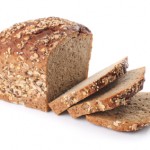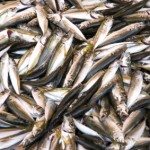My wife handed me an article the other day that she had clipped from the March 15, 2011 edition of The Wall Street Journal. The title was "Clues to Gluten Sensitivity." We've got several friends who have adopted gluten-free diets. When I went through medical school, in the Dark Ages, I only learned about celiac disease (CD), an autoimmune response to gluten. I hadn't thought about CD in years, but after finding a number of articles in the web-based medical literature, I realized there was an analogy between CD and severe lactose intolerance.
Some people lack the enzyme necessary to successfully drink cow's milk. They have bloating, pass gas and may have diarhea after drinking milk. Others, like me, can drink some milk, but have symptoms if they drink it in quantity. Still others may have a normal level of lactase, the enyzyme that allows digestion of lactose (the main sugar in cow's milk), but have an allergy to a protein in milk.
Similarly, about 1% of our population has CD as a genetic disease which causes severe symptoms after ingestion of gluten, a protein found in wheat, rye and barley. They can be diagnosed (while on a normal diet) with blood tests and a biopsy of the small bowel. The blood tests show the presence of certain antibodies and the biopsy shows the flattening of the usual villi, tiny finger-like projections that are crucial for the absorption of foods. CD doesn't go away, but a gluten-free diet can allow them to lead a normal, healthy life. The incidence of CD appears to have risen markedly over the last half century, perhaps because of alterations in modern wheat that increase the amount of gluten.
Now physicians at the University of Maryland Center for Celiac Research, Johns Hopkins and several Italian medical schools have found a much more common gluten sensitivity (GS) disorder. Those people don't have damaged villi or positive blood tests and may have a host of symptoms that relent when gluten is removed from their diet.
The estimates I've read range from 6 to 10% of our population as having GS. They don't appear to be reacting in the same way as those with CD. At present there's no definitive test for GS, but a gluten-free diet relieves the multitude of symptms that may be associated with this disorder.
Then, just to complicate things a bit further, there is also wheat allergy, a condition that is relatively rare (less than 1% of kids and some adults after exercise). That can cause severe problems with hives, nasal congestion or even anaphylactic shock.
The new disorder, GS, raise lots of questions with few answers, so stay tuned in and think about your own tolerance for gluten.




![iStock_000005888071XSmall[1]](http://peterdspringbergmdfacp.com/blog/wp-content/uploads/2011/03/iStock_000005888071XSmall1-150x150.jpg)








